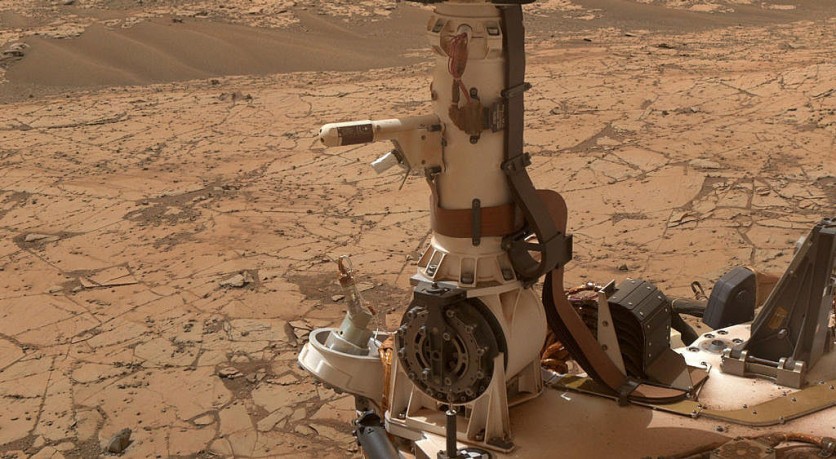NASA's Curiosity Rover has recently collected rock samples that may be the key ingredients that show a habitable environment on Mars.

The rover drilled samples from the Gale crater, the site of an ancient lake on the planet. For the first time, NASA scientists were able to measure the amount of organic carbon in Martian rocks.
The samples were gathered from a 3.5-billion-year-old mudstone rocks in the Yellowknife Bay formation that the rover has been exploring since 2012.
According to scientists, the sediment was formed through the physical and chemical weathering of volcanic rocks before they settled at the bottom of the lake.
The rover was able to analyze the fragments through the Sample Analysis at Mars (SAM) instrument. SAM users oxygen and high heat that converts the organic carbon into carbon dioxide.
With the amount of carbon dioxide that was produced, SAM calculates the organic carbon that was in the original sample. This helps tell the exact isotope ratio that enables scientists to further understand the carbon's source.
Aside from the organic carbon, there were also able to identify other signs that suggest that the Gale crater may have once supported life. The presence of chemical energy sources and compounds, such as nitrogen, oxygen, sulfur, and low acidity points to what could be a habitable environment on the planet.
Also Read: NASA Curiosity Rover Discover Ancient Rock Formation of Flower in Mars
Organic Carbon
The organic carbon is bound to a hydrogen atom, which is a prerequisite for organic molecules that are created and used by all known forms of life. It can also come from meteorites and volcanic eruptions.
The new measurements by NASA scientists provide insight into the total amount of carbon in organic compounds. This helps them understand the number of materials available as feedstock for prebiotic chemistry and biology.
The scientists were able to find 200 to 273 parts per million of organic carbon, which could be more than the amount found in rocks in low-life places on Earth.
This could mean that the lake environment on Mars could have been habitable for life.
With this amount of carbon, there is a possibility that the sediment that formed the rock could have been formed over the years by the interaction of water and volcanic rocks.
Gale Crater
The Gale Crater is an impact crater located on a low plain on the planet Mars. It is almost the same size as Earth's Lake Ontario. It was previously thought to have a dried or shallow lake in its interior, but the Curiosity rover proves otherwise.
It was believed that the crater had a low-lying lake that existed for millions of years in its interior based on the presence of layers of mudstone and minerals. However, with the new data, there is no longer a need for a sustained body of water for the formation of the sediment layers in Gale Crater.
Related Article: Weird Object on Mars: NASA Curiosity Rover Spots Strange Twisting Rock Towers
This article is owned by TechTimes
Written by April Fowell
![Apple Watch Series 10 [GPS 42mm]](https://d.techtimes.com/en/full/453899/apple-watch-series-10-gps-42mm.jpg?w=184&h=103&f=9fb3c2ea2db928c663d1d2eadbcb3e52)



